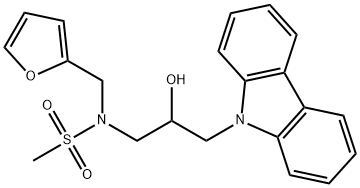Description
KL-001 (309928-48-1) is a novel tool that specifically interacts with cryptochrome (CRY) preventing its ubiquitin-dependent degradation resulting in lengthening of the circadian period. KL-001-mediated CRY stabilization inhibits glucagon-induced gluconeogenesis in primary hepatocytes.1?Binds to the FAD-binding pocket of CRY2 as determined by co-crystal structure.2?KL-001 induces an increase in period along with simultaneous reduction in amplitude of circadian reporter expression3 in mammalian cells.
Uses
KL001 is a small molecule that specifically interacts with cryptochrome (CRY). KL001 prevented ubiquitin-dependent degrdation of CRY, resulting in lengthening of the circadian period. KL001-mediated CRY stabilization inhibited glucagon-induced gluconeogenesis in primary hepatocytes making it a tool to study the regulation of CRY-dependent physiology and aid development of clock-based therapeutics of diabetes.
Biochem/physiol Actions
KL001 stabilizes cryptochrome (CRY), preventing ubiquitin-dependent degradation. CRY proteins are part of a feedback loop, acting as transcription repressors to inhibit CLOCK-BMAL1 components of the circadian clock. KL001 stabilization of CRY proteins results in lengthening of the circadian period, and also inhibited glucagon-induced gluconeogenesis in primary hepatocytes. Other compounds affecting circadian rhythms include Casein kinase I (CKI) inhibitors such as longdaysin (Sigma Prod. No. SML0127) and synthetic ligands for the nuclear receptors REV-ERB such as SR8278 (Sigma Prod. No. S9576), but KL001 appears to be the first small molecule that specifically acts on CRY proteins.
References
1) Hirota et al. (2012), Identification of small molecule activators of cryptochrome; Science, 337 1094
2) Nangle et al. (2013), Crystal structure of mammalian cryptochrome in complex with a small molecule competitor of its ubiquitin ligase; Cell Res., 23 1417
3) St. John et al. (2014), Spatiotemporal separation of PER and CRY posttranslational regulation in the mammalian circadian clock; Proc. Natl. Acad. Sci. USA, 11 2040

